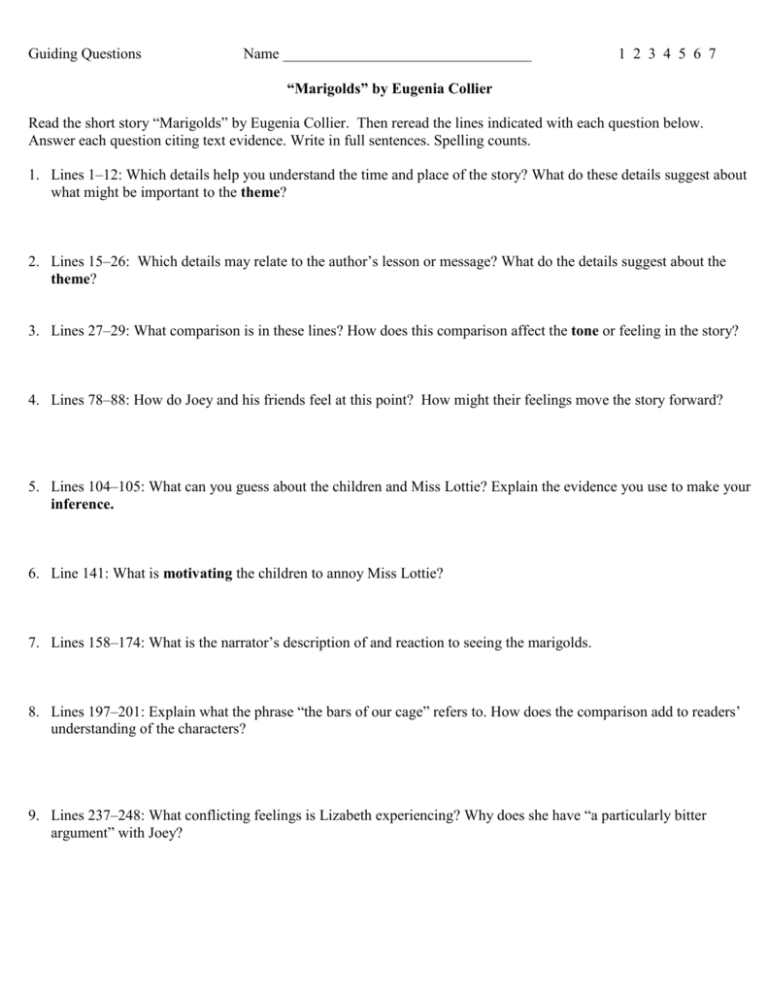Guiding Questions Name 1 2 3 4 5 6 7 “Marigolds” by Eugenia
advertisement

Guiding Questions Name _________________________________ 1 2 3 4 5 6 7 “Marigolds” by Eugenia Collier Read the short story “Marigolds” by Eugenia Collier. Then reread the lines indicated with each question below. Answer each question citing text evidence. Write in full sentences. Spelling counts. 1. Lines 1–12: Which details help you understand the time and place of the story? What do these details suggest about what might be important to the theme? 2. Lines 15–26: Which details may relate to the author’s lesson or message? What do the details suggest about the theme? 3. Lines 27–29: What comparison is in these lines? How does this comparison affect the tone or feeling in the story? 4. Lines 78–88: How do Joey and his friends feel at this point? How might their feelings move the story forward? 5. Lines 104–105: What can you guess about the children and Miss Lottie? Explain the evidence you use to make your inference. 6. Line 141: What is motivating the children to annoy Miss Lottie? 7. Lines 158–174: What is the narrator’s description of and reaction to seeing the marigolds. 8. Lines 197–201: Explain what the phrase “the bars of our cage” refers to. How does the comparison add to readers’ understanding of the characters? 9. Lines 237–248: What conflicting feelings is Lizabeth experiencing? Why does she have “a particularly bitter argument” with Joey? Page 2 Guiding Questions Name _________________________________ 1 2 3 4 5 6 7 “Marigolds” by Eugenia Collier 10. Lines 287–293: What comparisons does the author make? What is the impact of these comparisons? 11. Lines 287–300: Which details help explain what motivates Lizabeth to wake Joey? How might Lizabeth’s actions move the story forward? 12. Lines 324–338: What different feelings are causing Lizabeth to return to Miss Lottie’s? Why do these feelings provoke her actions at Miss Lottie’s? 13. Lines 351–361: What do Miss Lottie and her marigolds symbolize to the narrator? What does Lizabeth’s reaction to seeing Miss Lottie reveal about her? 14. Lines 365–386: What is a theme of this story? What details in the text support the theme? 15. Lines 385–386: What does the narrator mean when she says she has “planted marigolds”?











